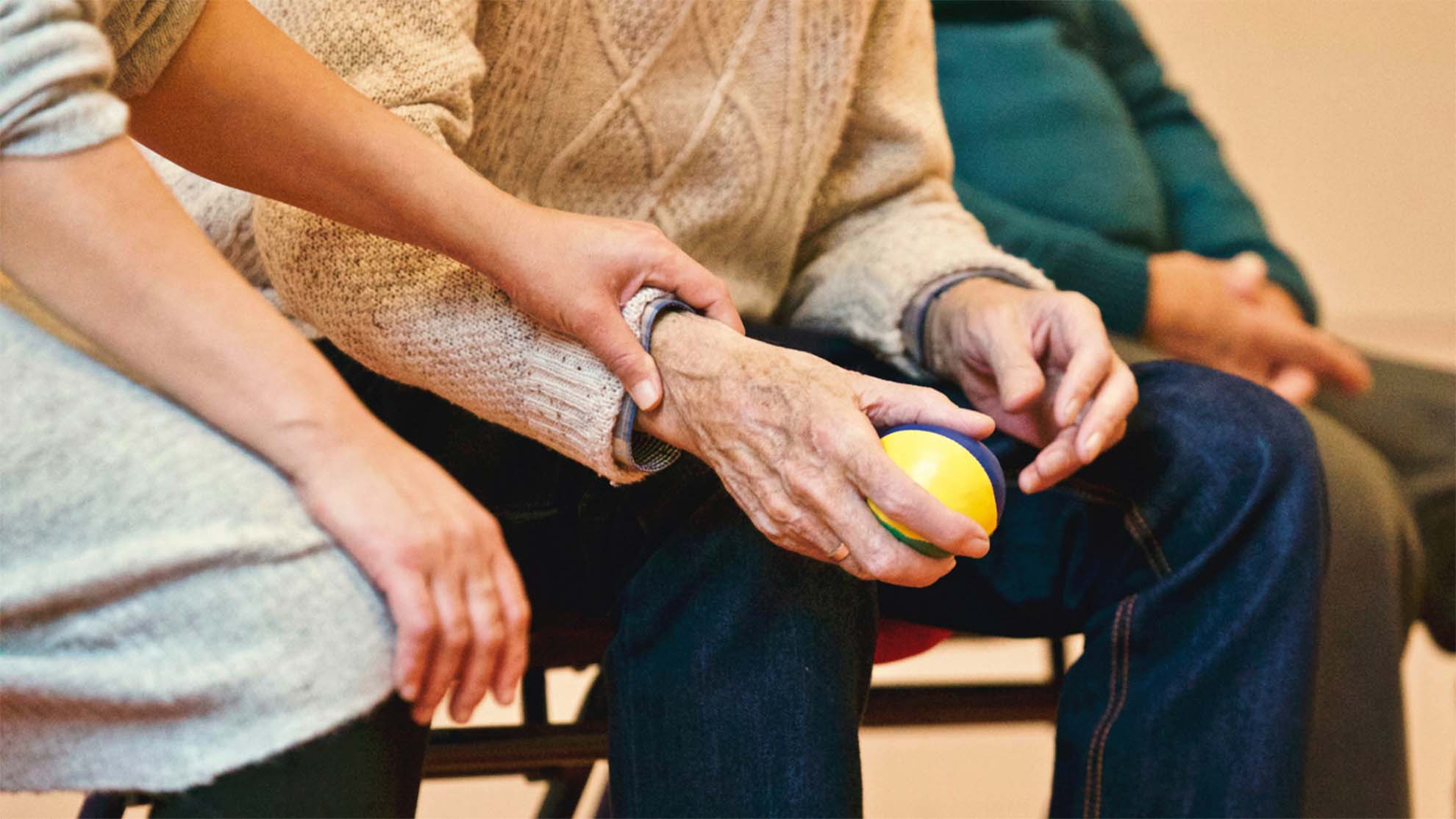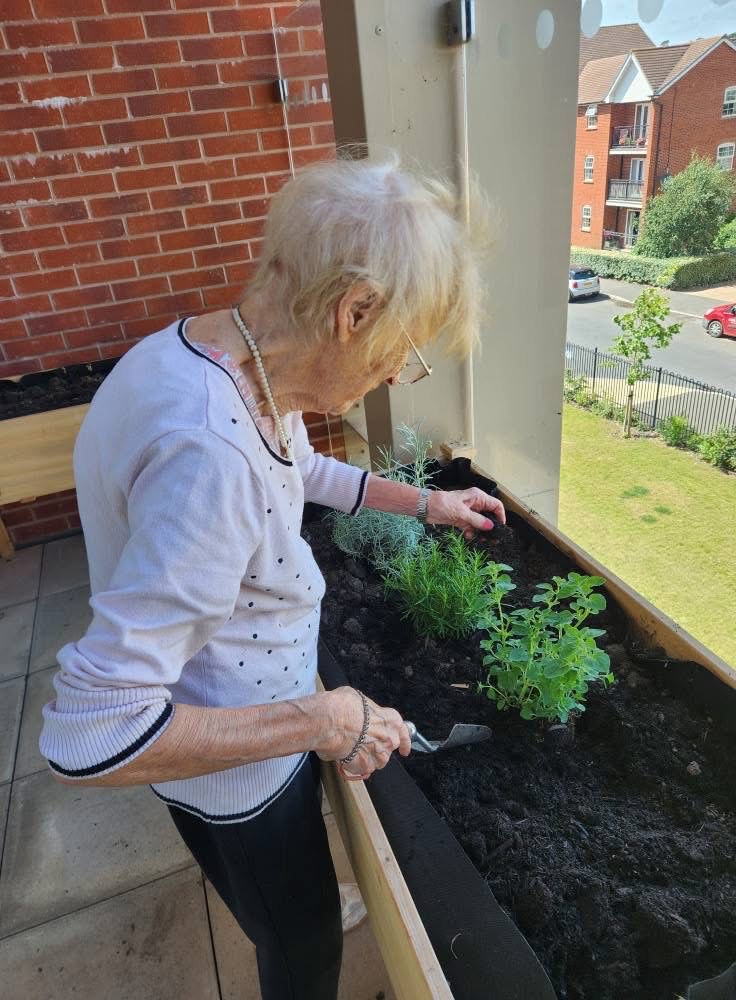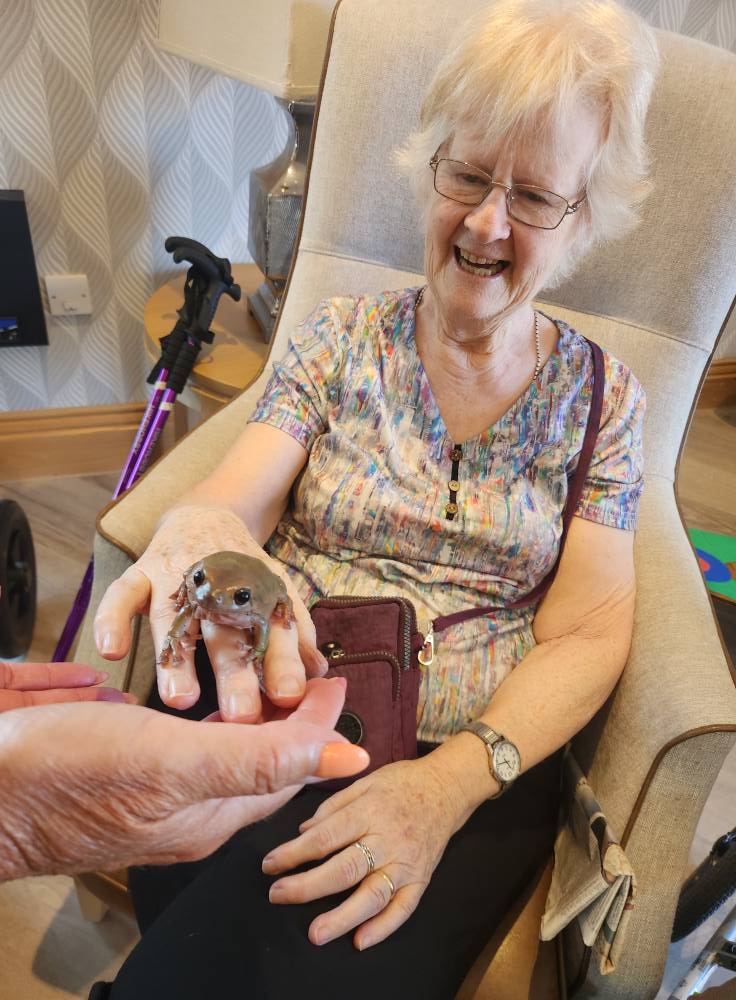The Power of Sensory Stimulation in Dementia Care
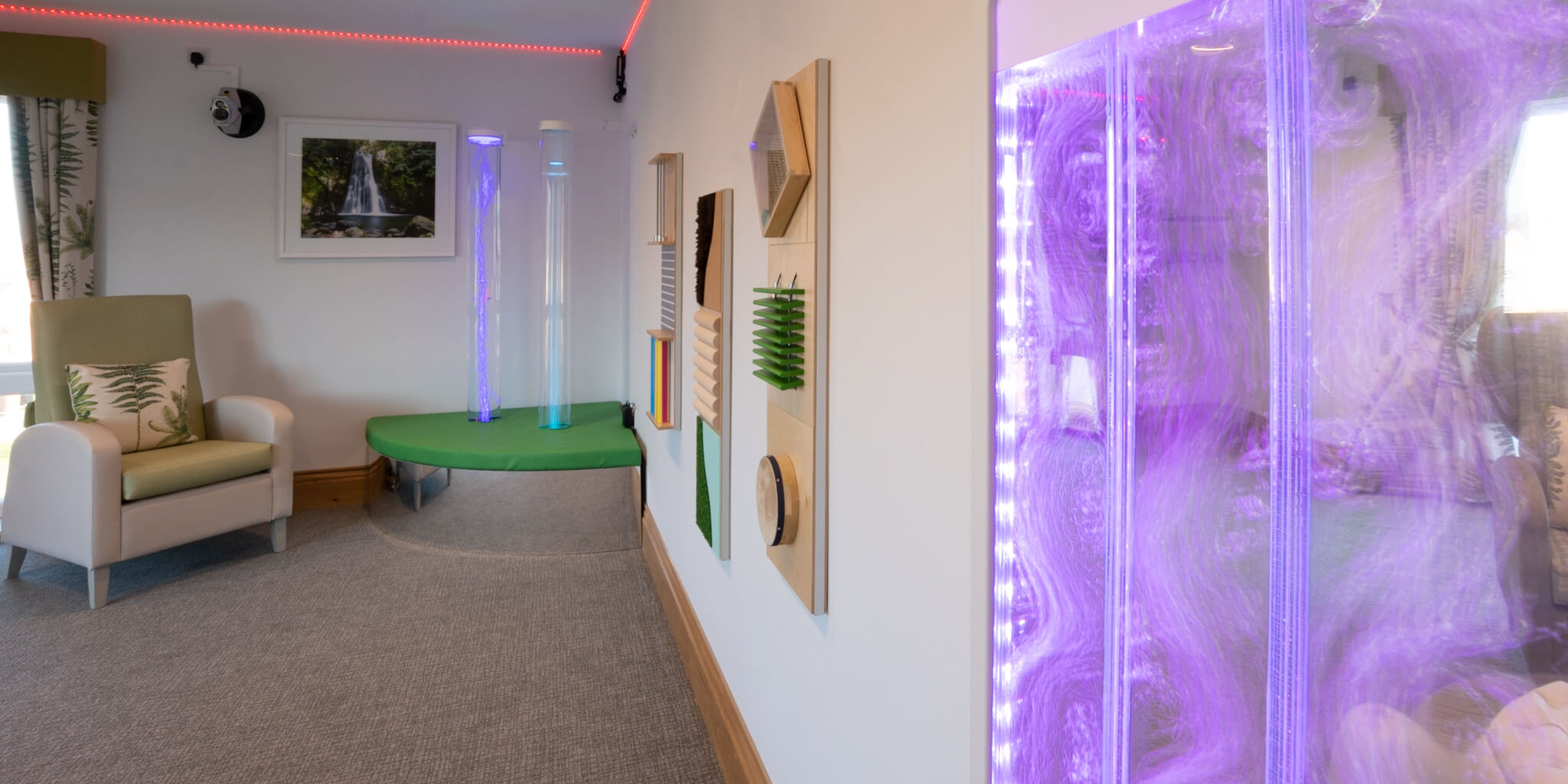
Understanding Sensory Stimulation in Dementia Care
At its core, sensory therapy involves the deliberate engagement of the five senses: Sight, sound, touch, smell and taste to stimulate and evoke responses.
Engaging the Senses: Sensory therapy is a dynamic process that seeks to awaken pathways in the person, stimulating their brain, reigniting connections and triggering memories long thought lost. Through carefully crafted experiences, individuals get opportunities to rediscover the world around them, finding solace and meaning in the familiar sensations of everyday life.
A Multifaceted Approach: This form of therapy recognises that each individual's experience within the world in a unique way, shaped by personal history, preferences and sensory abilities. As such, it encompasses a diverse range of activities and interventions, from visual displays and auditory stimulation to tactile stimulation, exploration and aromatherapy.
The Power of Reminiscence: One of the most common positive effects of this form of therapy is its ability to unlock memories deeply ingrained within the recesses of the mind. For individuals living with dementia, sensory experiences can serve as powerful triggers, transporting them back in time to moments of joy, comfort and significance.
Beyond Cognitive Decline: Importantly, sensory stimulation transcends the limitations imposed by health conditions, fine motor skills and cognitive decline, offering a means of connection and expression that is accessible to all. Regardless of the severity of their own health condition, individuals can find solace and enjoyment in sensory-stimulating activities, fostering a sense of autonomy and agency amidst the challenges they face.
The Role of a Dementia Sensory Room
Sensory rooms offer a safe environment for individuals living with dementia to engage their senses and reconnect with the world around them. These purposefully designed spaces play a pivotal role in dementia, providing a retreat full of sensory equipment to help the complexities of everyday life and opening doors to moments of joy, tranquillity and reminiscence of meaningful activities.
A Safe and Nurturing Environment - Central to the concept of sensory rooms is the creation of an environment that is both welcoming and calming. With soft lighting, soothing sounds for a calming effect and carefully selected soft furnishings throughout, these spaces are designed to minimise stress and anxiety, allowing residents to feel at ease and at peace within their surroundings.
Stimulating the Senses - At the heart of every sensory room lies a treasure trove of sensory experiences waiting to be explored. From tactile objects and textured surfaces to vibrant colours and evocative scents, each element is carefully chosen to engage the senses and ignite the imagination. Through interactive displays and immersive environments, residents are encouraged to play, discover, create and connect with the world in meaningful ways.
Promoting Engagement and Interaction - Sensory rooms help a residents' engagement and interaction, providing residents with opportunities to socialise, communicate and express themselves in ways that may otherwise be challenging. Whether thats through shared experiences with other residents or one-on-one interactions with care assistants, these spaces foster a sense of connection and belonging that is essential for their emotional wellbeing.
A Gateway to Reminiscence - Perhaps most importantly, sensory rooms in care homes have the power to unlock memories and emotions. For individuals living with dementia, the role of a sensory room in a care home serves as triggers for reminiscence therapy, transporting them back in time to cherished moments from their past. Through the sights, sounds and sensations of the sensory room, residents are given the gift of nostalgia and the opportunity to reconnect with their personal histories.



Designing the Sensory Room at Alexander House
At Alexander House Care Home in Exeter, the creation of our sensory room was guided by a vision of compassion, innovation and a deep understanding of the unique needs of individuals living with dementia or other developmental disabilities linked. Every element of the sensory room has been specifically designed to provide residents with a space that is both soothing and stimulating, offering a sanctuary where they can explore their senses, improve their communication skills and find moments of peace and joy amidst the challenges of their condition.
Central to the design of our entire sensory room, we recognised that each resident is unique, with their own preferences and visual impairment or sensitivities, we have ensured that the benefits of the multisensory environment are adaptable and customisable to meet the diverse needs of our community. From adjustable lighting and sound levels to a variety of tactile objects and sensory experiences, every aspect of the room can be tailored to provide a comfortable and enjoyable experience for each resident, which in the long run could also develop communication skills.
Our sensory room is a home for the senses, with familiar everyday objects, an array of sights, sounds, smells, and textures waiting to be discovered. From the gentle glow of coloured lights to the soothing sounds of nature and the soft touch of sensory materials, residents are invited to immerse themselves in a world of sensory delights. Whether they choose to explore independently or with the assistance of a carer, there are benefits of sensory room with endless opportunities for engagement and enjoyment.
When designing our sensory room, we drew inspiration from the past experiences and preferences of our residents. By incorporating familiar sights, sounds and sensations into the room, we aim to bring on memories and emotions that bring comfort and joy to those who visit. With sensory activities such as pet therapy, the scent of freshly baked cookies to the sound of a favourite song from years gone by, each element is carefully chosen to create a sense of familiarity and connection for our residents.
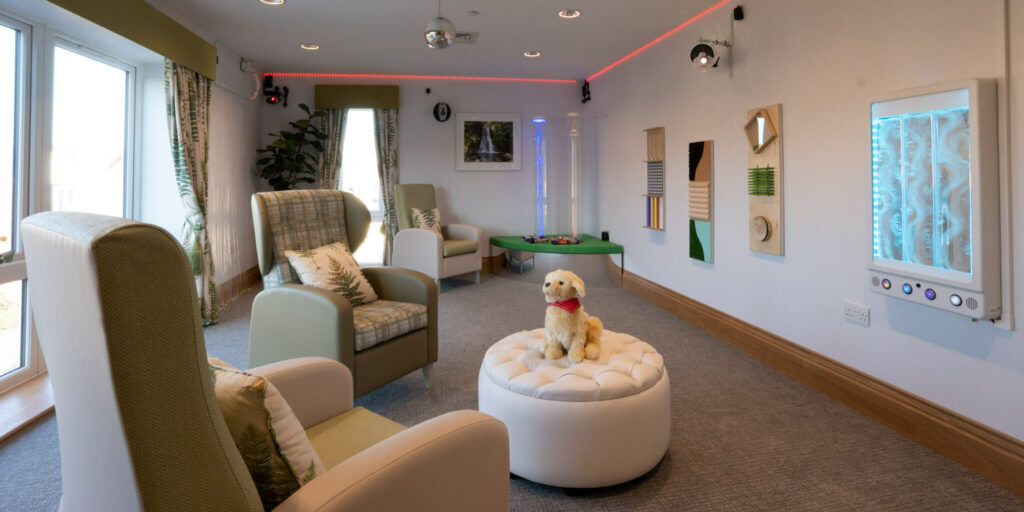
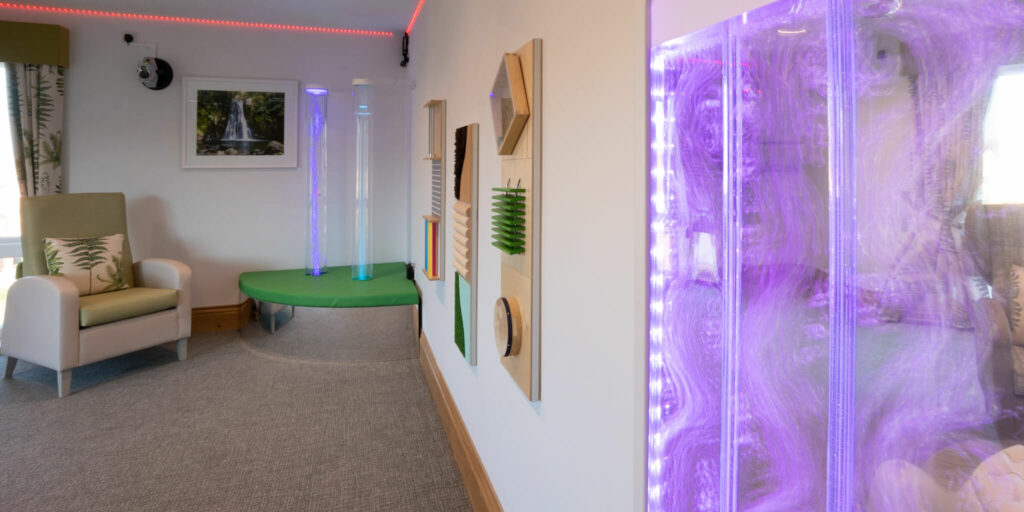

Above all, our sensory room is designed to provide residents with a space where they can feel calm, safe and supported. Whether they are seeking solace from the outside world or looking for a place to express themselves freely, the room offers a refuge where residents can find peace and tranquillity amidst the chaos of their condition. With its soothing atmosphere, coloured lighting and inviting ambience, the sensory room at Alexander House is a beacon of hope and comfort for all who enter its doors.
Dementia Care in Exeter at Alexander House
At Alexander House Care Home in Exeter, we offer first-class dementia care as well as help for those living with Alzheimer's disease. Our team of dedicated care experts ensure that each resident gets the attention and support that they deserve with a tailored care plan, which matches their needs.
The environment that we have in our specially designed room for our dementia community is light and airy with plenty of room to walk around. A benefit for residents is that we go above and beyond to ensure a warm, home-from-home feeling where everyone feels confident, happy and supported in retaining as much independence as possible. Free from the worries of daily tasks, those receiving our care are able to relax and focus on how they wish to spend their day.
We have a dedicated team of highly skilled professionals and carers who know the support needed to enhance the lives of each and every resident living with us. To further support our residents living with dementia, we provide printed, visual menus to help at mealtimes and snacks are available throughout the day to assist with nutrition and hydration.
Want to learn how we can support your loved ones here at Alexander House Care Home? Contact our care experts here, who will be able to answer any questions you might have, or call us on 01392 579 777 to book a tour and see our sensory room first-hand.
**This blog post was updated on Monday, 17th November 2025**

